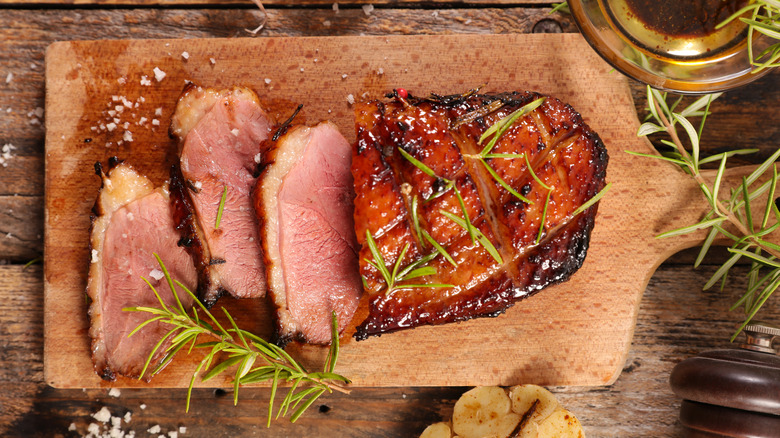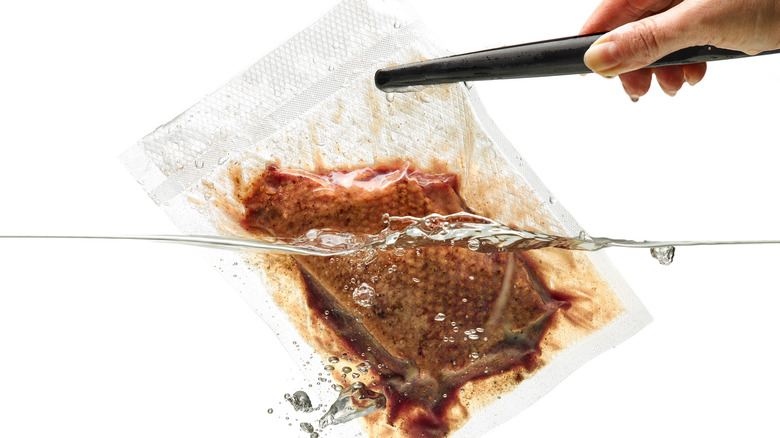Why It Pays To Sous Vide Duck Breast
Duck is undoubtedly an extremely delicious bird to enjoy, but there are quite a few mistakes you can make while roasting it. You can forget to render the fat, have soggy skin, not score the skin, and forget to rotate the duck (via Mashed). Duck is one of those birds that is super fatty, which makes for some fabulously moist and crispy-skinned poultry, but the bird must be cooked under a watchful eye and at the ideal temperature. Luckily, there is an excellent and easy way to achieve a perfectly done duck: cooking it sous vide.
Honest Food says that duck should be cooked as if it was a steak. Duck is poultry, but it should not be treated like chicken. Instead, it should not be cooked or heated to over 145 degrees Fahrenheit or it will turn out thoroughly overcooked. Duck breast should be made by roasting it until the meat is tender and the outer skin is crispy, which is usually done in a two or even three-step process, through baking and broiling or by finishing it on a hot stovetop.
But, if you have a sous vide machine at home, you already know the wonders this cooking method can work. Duck breast is especially suited for this process because, as Anova Culinary describes, sous vide allows for precise temperature control.
Temperature control is key
Sous vide allows for the food submerged in the water in an airtight bag to cook evenly on all sides and not have to experience dry heat, which is what you get in the oven, per Anova Culinary. Before you pop your juicy duck breasts in the sous vide, though, you should still prep them. According to Food & Wine, you should cure your duck at least a day or so before cooking. You should do this by drying the breasts with paper towels and then salting (using kosher salt) the skin and meat of the duck, incorporating your preferred spices into the curing process. After salting and seasoning, let the duck sit in the fridge where it can get some airflow so that the outside dries. This process will help crisp up the duck.
Izzy Cooking recommends using sous vide to maintain the moisture of the duck regardless of if you decided to take this extra curing step or not. The site says that you still must score the skin of the duck before sealing it. The sous vide will tenderize the duck and help it maintain the juiciness from the fat without overcooking the meat or burning the skin under direct heat. After the sous vide has worked its magic, quickly sear the skin of the duck, and voilà, you have perfect and easy duck breasts.

